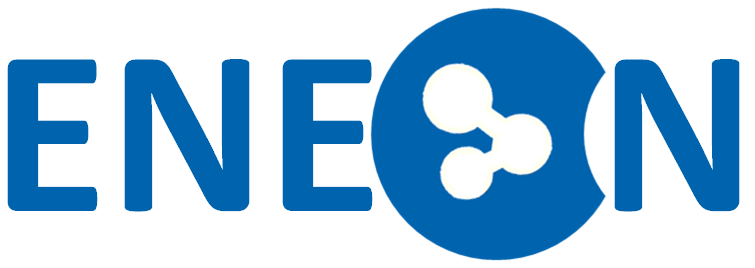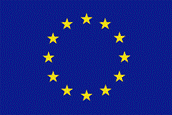Workshop infos
Relevant Links and Documents
|
| Adding Value through Collaboration and Coordination: There are many in situ networks in Europe, and European institutions are involved in numerous global networks. Fragmentation of efforts hinders a full exploitation of the integrated observations. The goal is to increase coordination and collaboration between networks, the processing, and the generation and dissemination of products to better serve the growing societal needs for environmental intelligence.
|
PROGRAM
Note that minor changes in the program may still happen due to late changes in speaker availability.
Speakers are asked to use the presentation template to be made available here as pptx. They are also asked to address the questions listed below the program.
The rooms for the workshop are V115 and V116.
Monday, September 21, 2015
| 0830 - 0900: | Registration |
| 0900 - 0940: | Session 1: Welcome and Introduction (Chairs: Joan Masó and Thierry Ranchin) |
| 0900 - 0910 | Thiery Ranchin (MINES Paris Tech): Welcome and Opening Remarks (pptx) |
| 0910 - 0920 | Joan Maso and Ivette Serral (CREAF): The ConnectinGEO project (pptx) |
| 0920 - 0930 | Ian McCallum (IIASA): ENEON (pptx) |
| 0930 - 1050: | Session 2: Goals, objectives, benefits and impacts (Chairs: Ivette Serral, Hans-Peter Plag)
|
| 0930 - 0950 | Barbara Ryan (GEO Secretariat): How ENEON should collaborate with and be included in GEO (pptx) |
| 0950 - 1010 | Michel Schouppe (EC): The European GEOSS context for ENEON (ppt) |
| 1010 - 1030 | Werner Kutsch (ENVRI+ Coordinator): The ENVRI+ Approach to networking (pptx) |
| 1030 - 1050 | Jan Hendrik Voet (IRCEL): The Copernicus cross-cutting in situ component (pptx) |
| 1050 - 1100 | Ivette Serral (CREAF) and Hans-Peter Plag (TIWAH): Workshop objectives and anticipated outcomes (pptx) |
| 1100 - 1125: | Coffee Break |
| 1125 - 1315: | Session 3: European Earth Observation Networks: Needs for coordination and collaboration regarding the detection of gaps and redundancies in GEOSS. (Chair: Joan Maso)
|
| 1125 - 1150 | Werner Kutsch (ICOS): ICOS: Integrated Carbon Observation System (pptx)
|
| 1150 - 1215 | J. Notholt (presented by Martine de Maziere): TCCON: Total Carbon Column Observing Network (pptx) |
| 1215 - 1240 | Martine de Maziere: NDACC: Network for the Detection of Atmospheric Composition Changes (pptx) |
| 1240 - 1310 | Geir Ole Braathen: How does the World Meteorological Organization manage and exploit its observational networks? (pptx) |
| 1310 - 1410: | Lunch |
| 1410 - 1540: | Session 3 continued (Chair: Martine de Maziere) |
| 1410 - 1440 | Stefano Nativi: GEOSS Infrastructure for Earth Observation Networks (pptx) |
| 1440 - 1505 | Simon Wilson: Arctic Monitoring and Assessment Programme (AMAP) (pptx) |
| 1505 - 1535 | Wolfgang Grabs: Hydrological networks (pptx) |
| 1535 - 1605 | Carine Bruyninx: EPN: EUREF Permanent Network and EUREF (pptx) |
| 1605 - 1625: | Coffee Break |
| 1625 - 1815: | Session 3 continued (Chair: Emili Garcia Ladona) |
| 1625 - 1645 | Eric Petermann: EUMETNET (pdf) |
| 1645 - 1715 | Begoña Perez: EuroGOOS (pptx) |
| 1715 - 1735 | Thomas Loubrieu: SEADATANET (Pan-European Infrastructure for Ocean and Marine Data Management) (pdf) and EUROARGO (pdf) |
| 1735 - 1755 | Wenche Aas: EMEP, ACTRIS (European Research Infrastructure for the observation of Aerosol, Clouds, and Trace gases) and atmospheric measurement activities of OSPARCOM and HELCOM (pptx) |
| 1755 - 1815 | Arne J. Berre: European Citizen Science Association (ECSA) (pptx) |
| 2000 - 2200: | Social Dinner (no host) |
Tuesday, September 22, 2015
| 0830 - 0900: | Registration |
| 0900 - 0945: | Session 4: Summary presentations from rapporteurs (Chairs: Ian McCallum, Hans-Peter Plag)
|
| 0900 - 0915 | Rapporteur 1 (Ian McCallumn): Summary of key issues for sustainable EO networks in Europe (question block 1) (pptx) |
| 0915 - 0930 | Rapporteur 2 (Antonio Bombelli): Summary of data availability, sharing, and gaps (question block 2) (pptx) |
| 0930 - 0945 | Rapporteur 3 (Hans-Peter Plag): Summary of existing collaboration mechanisms, experience and lessons from the efforts (question block 3) (keynote, pdf) |
| 0945 - 1105: | Session 5: Engaging participation in ENEON: Lessons Learned (Chair: Palma Blonda)
|
| 0945 - 1020 | Michael Mirtl: Long Term Ecological Research Network (LTER): overcoming fragmentation, lack of coordination, and duplication (pdf)
|
| 1020 - 1100 | Lucy Bastin: Linking service infrastructure: Lessons learnt from DOPA: Digital Observatory for Protected Areas |
| 1100 - 1130 | Jan Hendrick Voet: EIONET: European Environment Information and Observation Network (pptx) |
| 1130 - 1145: | Coffee Break |
| 1145 - 1220 | Geoff Sawyer: Collaboration between Industry and European Networks (ppt) |
| 1220 - 1300: | Session 6: Toward enhanced coordination and collaboration (Chair: Hans-Peter Plag)
|
| 1220 - 1245 | Hans-Peter Plag, Palma Blonda, Werner Kutsch, Jan Hendrick Voet, Geoff Sawyer: Panel statements on enhancing coordination and collaboration across disciplines and sectors |
| 1245 - 1315 | Hans-Peter Plag: The GEO Knowledge Base and Gap Analyses (keynote, pdf) |
| 1315 - 1400: | Lunch |
| 1400 - 1430 | Palma Blonda: Defining user needs and essential variables to support GEOSS objectives (pptx) |
| 1430 - 1600: | Session 7: Refine goals, objectives and benefits of ENEON (Chair: Joan Maso)
|
| 1430 - 1440 | Hans-Peter Plag: Benefits of a European Earth Observation Network of Networks |
| 1440 - 1500 | Ian McCallum: Draft goals, objectives and benefits of ENEON |
| 1500 - 1530 | All (Moderator: Joan Maso): Round table: Goals, Objectives, and Benefits of ENEON |
| 1530 - 1535 | Moderator: Summary of Round Table outcomes |
| 1535 - 1610: | Coffee Break |
| 1610 - 1720: | Session 8: Organization and management of ENEON (Chairs: Hans-Peter Plag, Jay Pearlman) |
| 1610 - 1640 | Hans-Peter Plag: Draft organization, ToR, and membership of ENEON (keynotes, pdf) |
| 1640 - 1700 | Paola Campus (remote presentation): Thoughts on a funding cycle for ENEON (pdf) |
| 1620 - 1630 | Joan Maso: Coordination of ENEON with similar initiatives, including ENVRI Plus (pptx) |
| 1630 - 1710 | All (Moderator: tbd): Discussion: ENEON organization, management and membership |
| 1710 - 1720 | Hans-Peter Plag: Summary and revised ToR for ENEON |
| 1720 - 1800: | Session 9: Summary Session: A roadmap for ENEON (Chairs: Ivette Serral, Hans-Peter Plag) |
| 1720 - 1735 | Ivette Serral: ENEON definition, criteria, processes (pptx) |
| 1735 - 1745 | Hans-Peter Plag: Steps towards the implementation of ENEON |
| 1745- 1800 | Joan Masó and Thierry Ranchin: Concluding remarks |
QUESTIONS TO BE ADDRESSED BY SPEAKERS
The speakers are asked to give an overview of the status of their network and its potential linkages to higher level coordination and collaboration networks. All speakers should address the same set of questions to get a coherent overview of the status. These question include:
Introduction of the network:
- What network are you representing and what is your role in this network?
- What are the main objectives of the network?
- Who are the main contributors to your network?
- What form of commitment do you have for the maintainance your network?
- How large is your user base and who are your users?
- Do you maintain a database of user needs and observational requirements?
- What are the costs and efforts of maintaining the network?
- What are your main funding sources?
- What are the key issues for sustainability of your network running?
About data:
- What observations does your network collect and what products are produced?
- What are the spatial and temporal characteristics and limits of your network?
- How is the data archived and made accessible to users?
- Do you address data quality in some way?
- Are there risk for data continuity and how are data preservation and network continuity addressed?
- What are the conditions (licenses) for sharing your data and products with users?
- What key interface standards are used in making data and products available?
- Are there known observational requirements that your network is not meeting?
- Are there observations that are needed but not captured by your network or by other networks that you have access to or products that are not generated?
About a network of networks:
- What coordination and collaboration interfaces do you have with other networks?
- Is you network contributing to GEO(SS) and if so, what is this contribution? Could ConnectinGEO help to enhance your contribution to GEOSS?
- Are there additional interfaces that would be desired and what would be the main benefits of these interfaces?
- Do you think that your network could benefit from the existence of an ENEON or a similar network?
- From you point of view, how should an ENEON be organized and managed?
|



